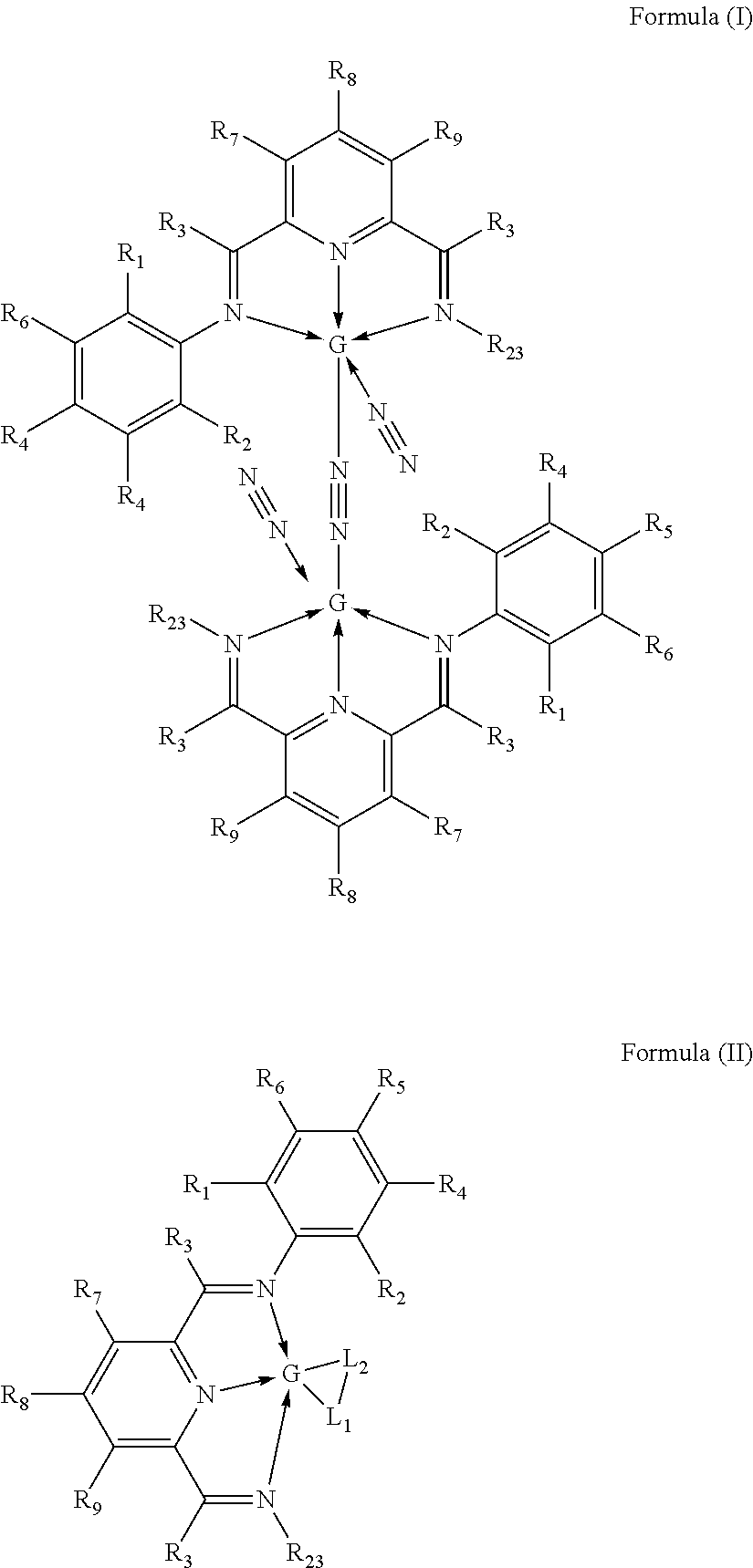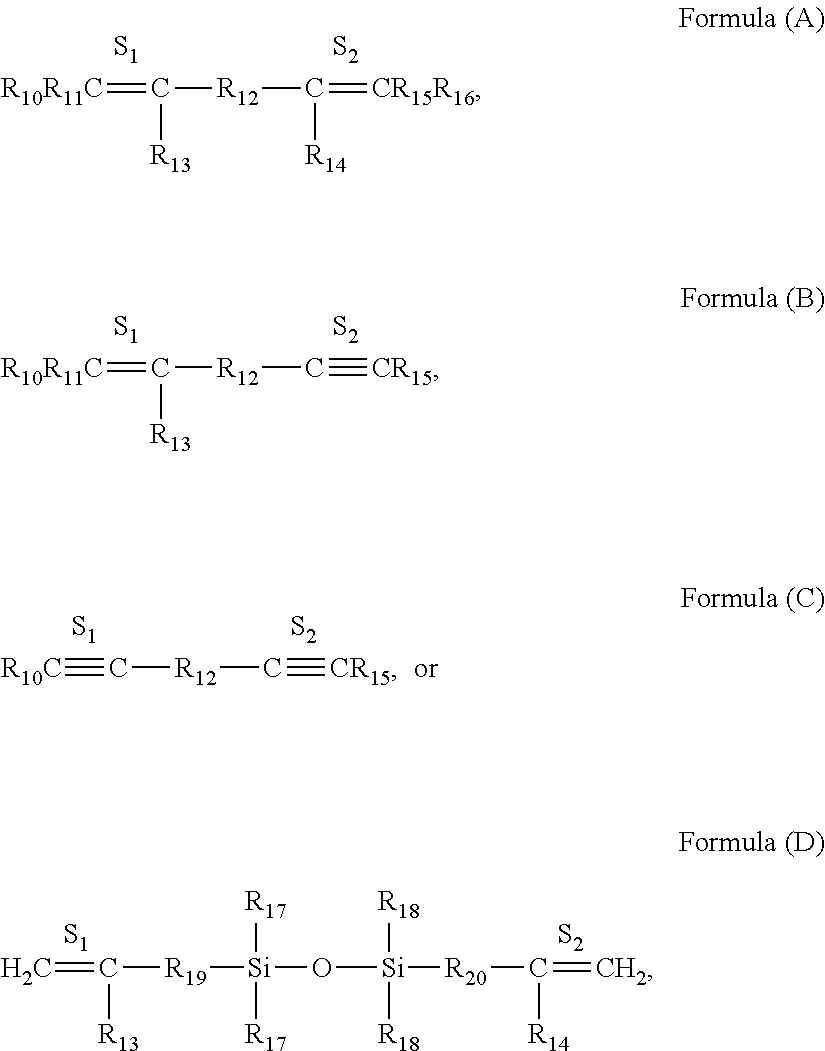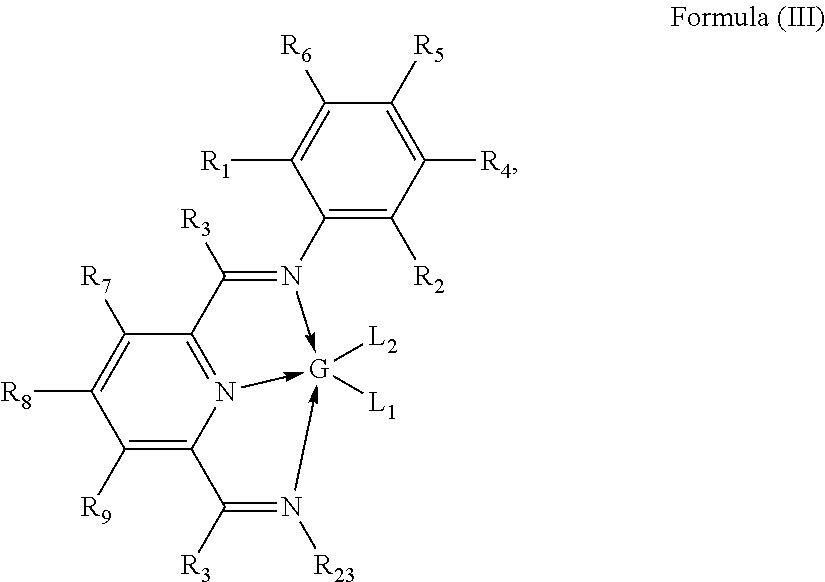Hydrosilylation Catalysts
a catalyst and hydrosilylation technology, applied in the direction of metal/metal-oxide/metal-hydroxide catalysts, physical/chemical process catalysts, iron organic compounds, etc., can solve the problem of reducing the performance of precious metal complex catalysts in end-use applications, forming undesirably odoriferous byproduct compounds, and inefficient catalytic performance of precious metal complex catalysts
- Summary
- Abstract
- Description
- Claims
- Application Information
AI Technical Summary
Problems solved by technology
Method used
Image
Examples
examples
[0084]General Considerations:
[0085]All air- and moisture-sensitive manipulations were carried out using standard vacuum line, Schlenk, and cannula techniques or in an MBraun inert atmosphere drybox containing an atmosphere of purified nitrogen. Solvents for air- and moisture-sensitive manipulations were initially dried and deoxygenated using literature procedures. See for example Pangborn et al., J. Organometallics 1996, 15, 1518.
[0086]The following abbreviations and terms are used:
[0087]bs—broad singlet
[0088]s—singlet
[0089]t—triplet
[0090]bm—broad multiple
[0091]GC—Gas Chromatography
[0092]MS—Mass Spectroscopy
[0093]THF—tetrahydrofuran
examples 1-9
Preparation of Metal Complexes of the Invention
example 1
Preparation of [2,6-Diacetylpyridinebis(2,6-dimethylphenylimine)]iron dibromide (hereafter 2,6-Me2PDIFeBr2)
1.1 Preparation of 2,6-diacetylpyridine
[0094]A 3 L 3-neck round bottomed flask was charged with 54.6 g (0.802 mol) of sodium ethoxide. While stirring vigorously with a mechanical stirrer, a solution of 35.5 g (0.159 mol) of 2,6-diethyl pyridinedicarboxylic ester in 300 mL of ethyl acetate was added dropwise to the flask. The resulting slurry was refluxed for 20 h, followed by cooling to 0° C., and addition of 350 mL (4.2 mol) of concentrated HCl. The mixture was then refluxed for 20 h, forming a white precipitate and a clear yellow solution. Upon cooling, the mixture was added to a separatory funnel containing ˜1 L of water. The organic layer was separated; and the aqueous layer was extracted with CH2Cl2. The organic layers were combined, washed with saturated Na2CO3, dried over Na2SO4, and concentrated using rotary evaporation. The resulting brown solid was dissolved in a mini...
PUM
| Property | Measurement | Unit |
|---|---|---|
| covalent bond | aaaaa | aaaaa |
| valences | aaaaa | aaaaa |
| reduction potential | aaaaa | aaaaa |
Abstract
Description
Claims
Application Information
 Login to View More
Login to View More - R&D
- Intellectual Property
- Life Sciences
- Materials
- Tech Scout
- Unparalleled Data Quality
- Higher Quality Content
- 60% Fewer Hallucinations
Browse by: Latest US Patents, China's latest patents, Technical Efficacy Thesaurus, Application Domain, Technology Topic, Popular Technical Reports.
© 2025 PatSnap. All rights reserved.Legal|Privacy policy|Modern Slavery Act Transparency Statement|Sitemap|About US| Contact US: help@patsnap.com



